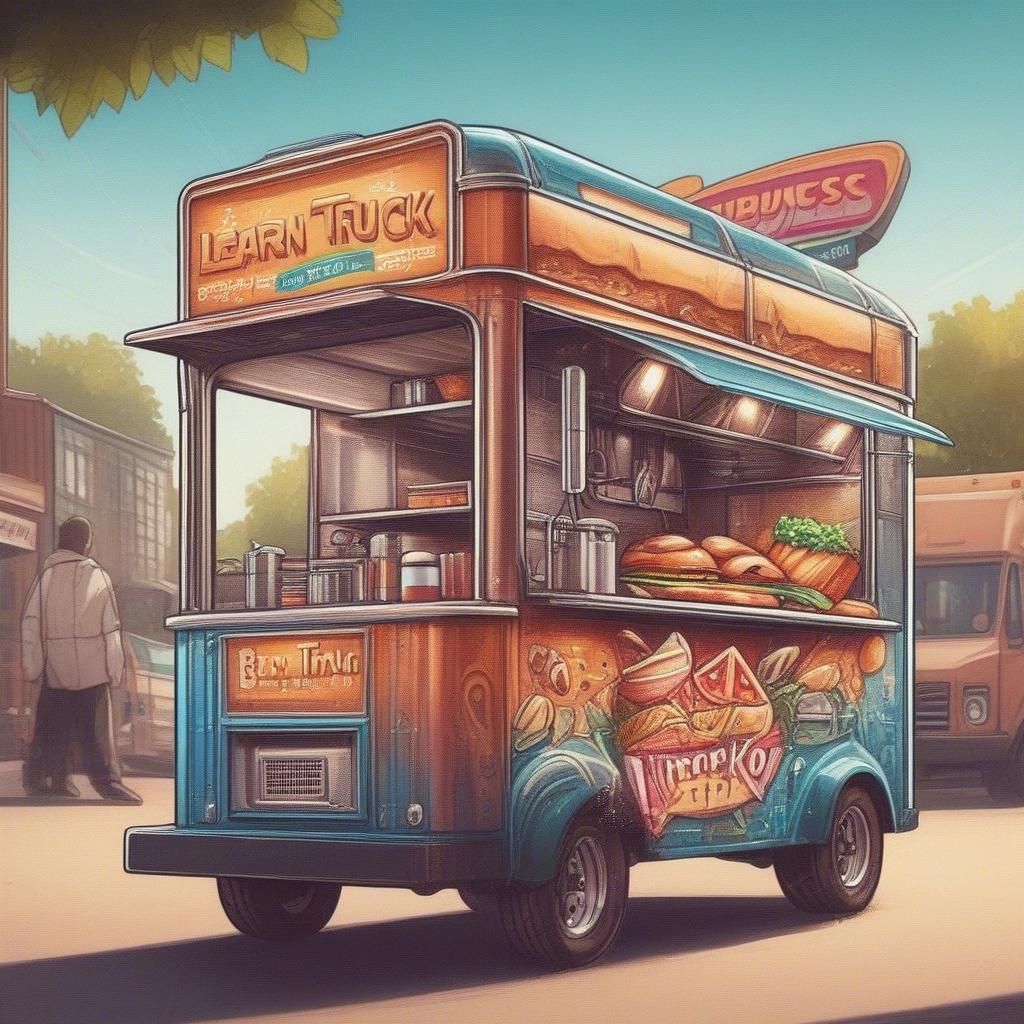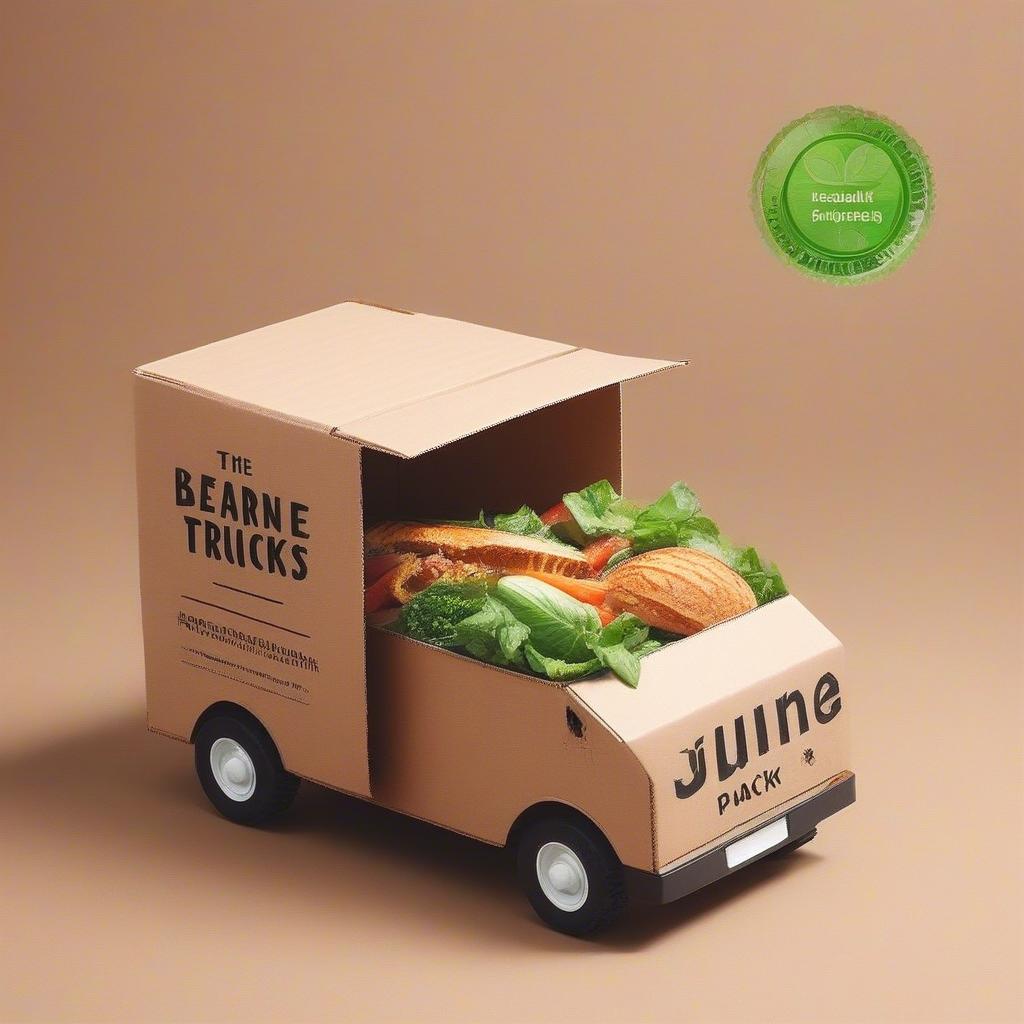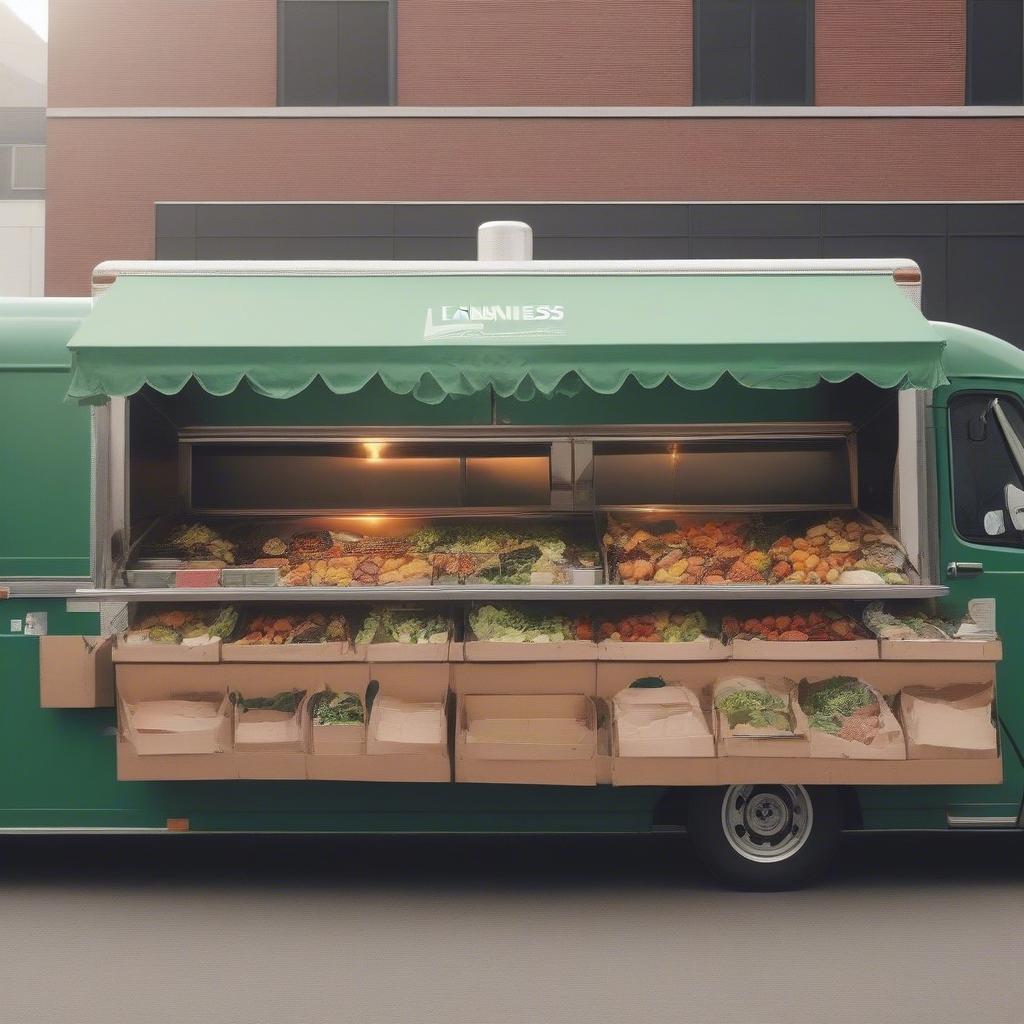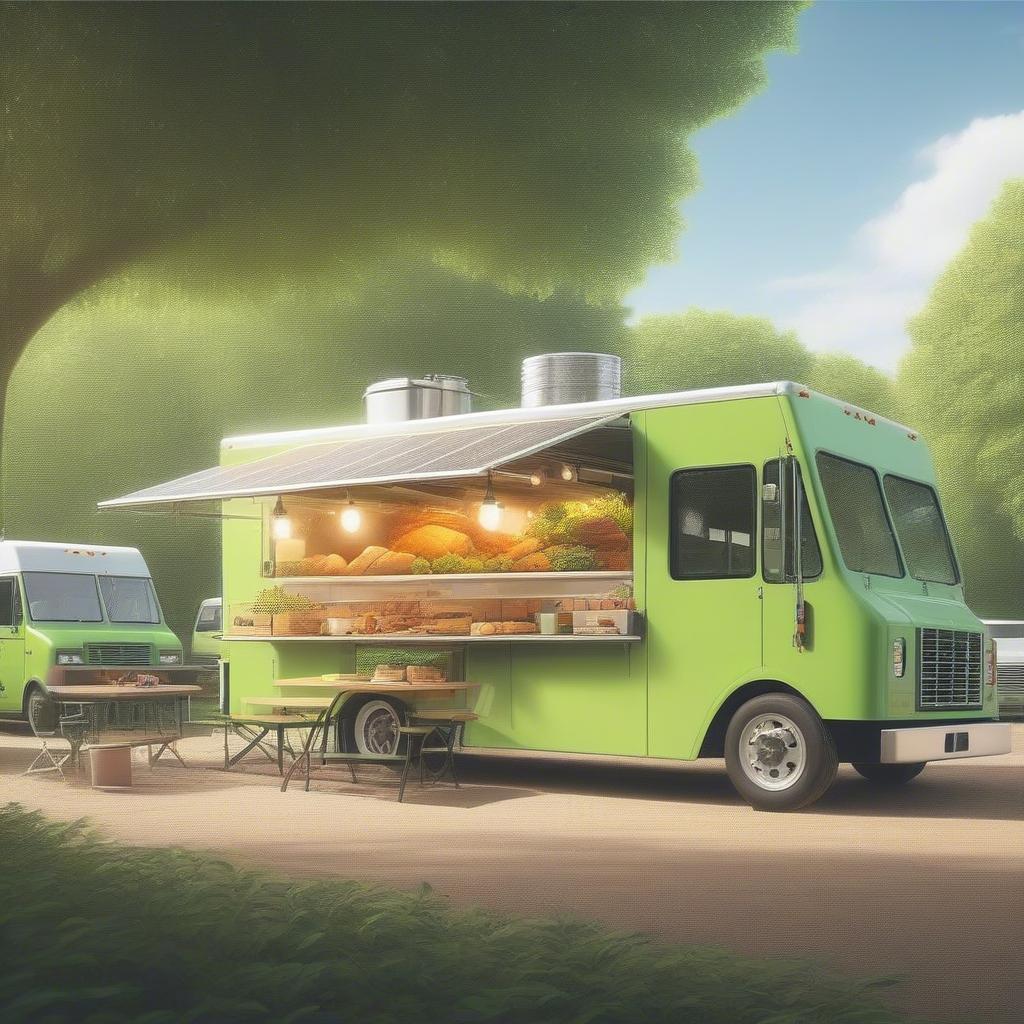
The food truck industry is a vibrant and ever-evolving landscape. As we look towards 2025, it’s clear that food truck design will be a crucial differentiator for success. Gone are the days of simply slapping a logo on a van; today’s mobile culinary businesses require thoughtful design that captures attention, enhances the customer experience, and optimizes functionality. Let’s dive into the top 7 food truck design trends poised to dominate in 2025, ensuring your mobile dining venture stands out from the crowd.
1. Sustainable & Eco-Conscious Designs: Serving Up Good, Inside and Out
Why Sustainability Matters for Food Trucks
Consumers are increasingly aware of their environmental footprint. This translates directly to their purchasing decisions, especially in the food industry. A food truck design that emphasizes sustainability isn’t just good for the planet; it’s good for business. It signals to customers that you care about more than just profits, fostering trust and brand loyalty.
How to Implement Sustainable Design
- Eco-Friendly Materials: Opt for recycled, reclaimed, or sustainably sourced materials in your truck’s construction. Think bamboo countertops, recycled metal siding, and reclaimed wood accents.
- Energy Efficiency: Invest in energy-efficient appliances, LED lighting, and solar panels. These reduce operational costs and minimize your carbon footprint.
- Reduced Waste: Design your truck with waste reduction in mind. This could include built-in composting systems, refillable condiment stations, and the use of biodegradable packaging.
- Green Branding: Integrate your commitment to sustainability into your brand messaging, from your logo to your menu descriptions. Highlight your eco-friendly practices to connect with like-minded customers.
Examples & Practical Tips
- Plant-Based Food Truck Example: A vegan food truck using reclaimed wood, solar panels, and compostable packaging is an excellent example of a completely sustainable operation that is very appealing for 2025.
- Template Idea: Create a “Sustainability Checklist” for your truck design and operations. This will help you track your progress and identify areas for improvement.
- Actionable Tip: Research local vendors specializing in sustainable materials. Often, these local resources can provide unique, affordable options that align with your values and help you stand out.
2. Immersive & Experiential Designs: More Than Just a Meal
Creating an Experience, Not Just a Transaction
The best food truck design goes beyond aesthetics; it creates an immersive experience that engages all the senses. In 2025, customers are looking for more than just a quick bite – they’re seeking a memorable and shareable moment.
Elements of an Immersive Experience
- Themed Design: Align your truck’s design with your cuisine. A vibrant, colorful truck for Mexican fare, or a rustic, farmhouse look for farm-to-table meals.
- Interactive Elements: Incorporate interactive features like digital menu boards, open kitchen concepts, or a music system that matches the vibe of the place.
- Ambiance Creation: Consider lighting, seating arrangements (if space allows), and the overall flow of your customer area to create an inviting atmosphere.
- Photo-Worthy Moments: Design elements specifically for social media sharing. Create a visually appealing backdrop, a branded mural, or a unique food presentation.
Strategies & Templates
- Storytelling Strategy: Develop a narrative that explains the philosophy behind your food, which can be expressed visually in your design and integrated into your customer interactions.
- Ambiance Template: Plan your outdoor set up to create a welcoming ambiance. Think about adding picnic tables, umbrellas, lighting, and music.
- Example: A BBQ food truck with a smoker attached, playing classic blues, and using rustic decor creates a full sensory experience.
3. Minimalist & Streamlined Designs: Clean, Efficient, and Modern
Embracing Simplicity in Food Truck Design
In contrast to the maximalist approach, minimalist food truck design is making waves. This aesthetic focuses on clean lines, uncluttered spaces, and a sophisticated sense of simplicity. It emphasizes efficiency, functionality, and a modern appeal.
Key Features of Minimalist Design
- Clean Color Palettes: Stick to a limited color scheme, often using neutral tones with one or two accent colors.
- Simple Graphics: Avoid overly complex graphics or cluttered branding. Focus on a simple, memorable logo and clear messaging.
- Functionality: Prioritize efficient workflow and space optimization. Every element should serve a purpose.
- High-Quality Materials: Use high-quality materials that convey a sense of sophistication and durability.
Practical Steps & Examples
- Workflow Template: Create a detailed workflow diagram of food preparation and service inside your truck. This ensures efficiency and proper space utilization.
- Example: A coffee truck using simple, geometric shapes, a matte black exterior, and a clean white interior is a perfect example of minimalist design.
- Actionable Tip: Use a design tool like Canva or Figma to create mock-ups of different minimalist options before committing to a final design.
4. Bold & Eye-Catching Designs: Standing Out in a Crowd
Making a Statement with Your Food Truck
While minimalism has its place, some businesses need to make a bolder statement. In 2025, food truck design is about expressing your unique brand identity and attracting attention in a saturated market.
Elements of Bold Design
- Vibrant Colors: Don’t shy away from bright, bold colors that command attention.
- Unique Shapes & Patterns: Incorporate unconventional shapes, patterns, or textures to create visual intrigue.
- Large-Scale Graphics: Use large-scale graphics, murals, or illustrations that are impossible to ignore.
- Unexpected Details: Integrate surprising elements that make your truck memorable and distinctive.
Strategies & Examples
- Color Psychology Strategy: Research color psychology to understand how different colors can evoke different emotions and associations with your brand.
- Example: A food truck that is completely wrapped in a bright graffiti pattern, has neon signage, and a playful brand name is an example of a bold design.
- Actionable Tip: Start with a mood board containing images that represent your brand’s identity. This will help guide your color palette, style, and overall design.
5. Technology-Integrated Designs: Efficiency & Customer Convenience
Leveraging Technology in Food Truck Operations
Technology is revolutionizing every aspect of the food industry, and mobile dining is no exception. In 2025, food truck design must integrate tech to enhance efficiency and provide a seamless customer experience.
Tech Integration Ideas
- Digital Menu Boards: Replace static menus with digital displays that can be updated in real time.
- Mobile Ordering & Payment: Allow customers to order and pay through a mobile app, minimizing wait times.
- GPS Tracking & Real-Time Updates: Provide customers with up-to-date information on your location and operating hours.
- Inventory Management Systems: Use software to manage your inventory, reducing waste and ensuring you’re always stocked.
- Interactive Screens & Entertainment: Enhance customer engagement with screens that display menus, specials, customer feedback, or even entertainment.
Tools & Strategies
- Tech Stack Template: Outline all the technology solutions your food truck needs, from POS systems to online ordering platforms.
- Example: A food truck utilizing tablets for order taking, a mobile app for loyalty programs, and a live location tracker, demonstrates a high degree of technology integration.
- Actionable Tip: Research cloud-based POS systems tailored for mobile food businesses to streamline your transactions and operations.
6. Adaptable & Modular Designs: Flexibility for the Future
The Importance of Adaptability in Food Truck Design
The food truck industry is known for its dynamism. Trends shift, regulations change, and your business needs to adapt to thrive. A flexible and modular food truck design allows you to quickly pivot and adjust to changing circumstances.
Key Features of Adaptable Design
- Modular Components: Use modular interior and exterior elements that can be easily reconfigured or replaced.
- Multi-Functional Spaces: Design interior spaces that can be easily modified for different purposes.
- Convertible Features: Incorporate elements that can be converted for different needs, such as additional seating or storage.
- Future-Proofing: Design with the possibility for future upgrades and expansions in mind.
Planning & Examples
- Adaptability Planning Template: Create a checklist of potential future needs and incorporate flexibility into your initial design.
- Example: A food truck with a removable serving window that can be replaced with a larger screen is an example of modular flexibility.
- Actionable Tip: Consult with a custom fabricator specializing in modular design who can offer innovative solutions for your unique needs.
7. Branding & Storytelling-Centric Designs: Building an Emotional Connection
The Power of Brand Storytelling
Beyond visual appeal, successful food truck design in 2025 centers on building an emotional connection with customers through compelling branding and storytelling. Your truck should not only serve great food but also embody a unique story that resonates with your target audience.
Elements of a Story-Driven Design
- Consistent Branding: Ensure your logo, colors, fonts, and messaging are consistent across all aspects of your food truck design.
- Visual Storytelling: Use graphics, illustrations, and imagery that convey your brand’s story, values, and origins.
- Brand Voice: Develop a distinctive brand voice that is reflected in your messaging and interactions with customers.
- Customer Engagement: Encourage customers to participate in your story through social media, loyalty programs, or events.
Strategies & Practical Examples
- Brand Story Worksheet: Create a worksheet to define your mission, values, target audience, and unique selling proposition.
- Example: A food truck that features a family recipe prominently on the menu, showcases old family photos, and tells the story of their heritage through the truck design is an example of storytelling at its finest.
- Actionable Tip: Conduct customer research to understand what aspects of your brand story resonate most with them, and tailor your design accordingly.
Learn Business: Your Partner in Food Truck Success
Navigating the world of food truck design and business can be complex. That’s where Learn Business comes in. We understand the unique challenges and opportunities of the food truck industry. We support businesses by offering guidance, templates, and resources to help you succeed.
How Learn Business Supports Food Truck Businesses:
- Business Plan Templates: Access comprehensive business plan templates specifically designed for food trucks to help you lay out a solid operational and financial plan.
- Marketing Strategy Guides: Develop effective marketing plans tailored to your food truck, allowing you to get your name out there and attract customers.
- Financial Templates: Easily manage your budget, track expenses, and plan for financial success with detailed financial templates.
- Legal Compliance Checklists: Make sure your business is compliant and avoid potential legal issues with easy-to-follow checklists.
- Personalized Guidance: Get personalized guidance from our team of experts to address your specific challenges and opportunities.
We believe in empowering entrepreneurs to achieve their goals. Whether you’re just starting or looking to take your food truck to the next level, Learn Business is here to support you every step of the way.
Conclusion: Designing for Success in 2025
The future of mobile dining is bright, and food truck design will continue to play a vital role in the success of any venture. By embracing these top 7 trends, you can create a visually stunning, operationally efficient, and emotionally engaging food truck that resonates with your customers and stands out in the competitive landscape. Remember that your truck is not just a vehicle; it’s a representation of your brand, your passion, and your commitment to delivering a memorable experience. As you prepare for 2025 and beyond, consider these trends and let your creative vision take shape, transforming your dream into a thriving mobile culinary business. With the right planning, thoughtful design, and the right support, the road to success awaits.



Leave a Reply